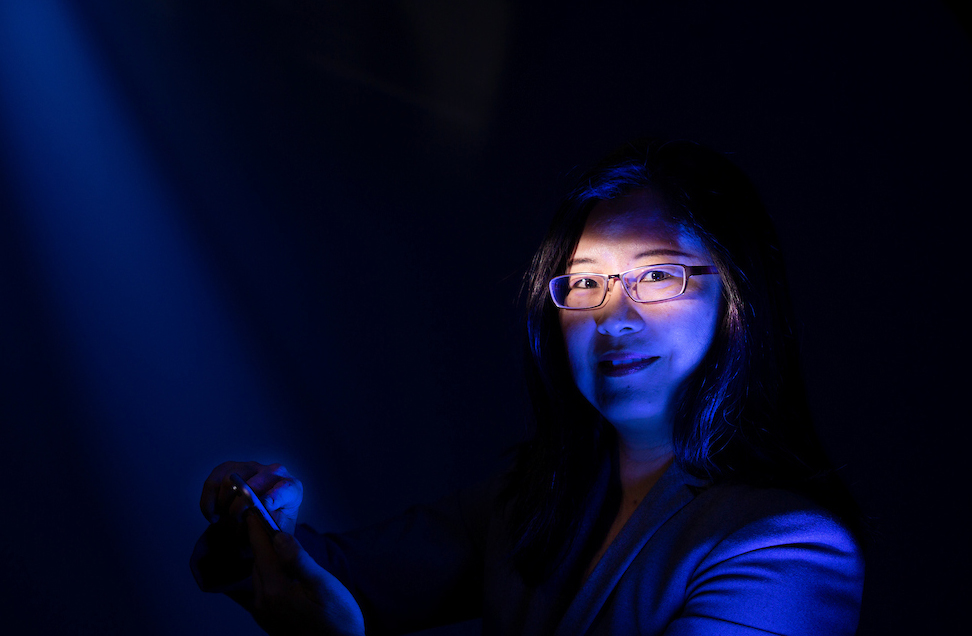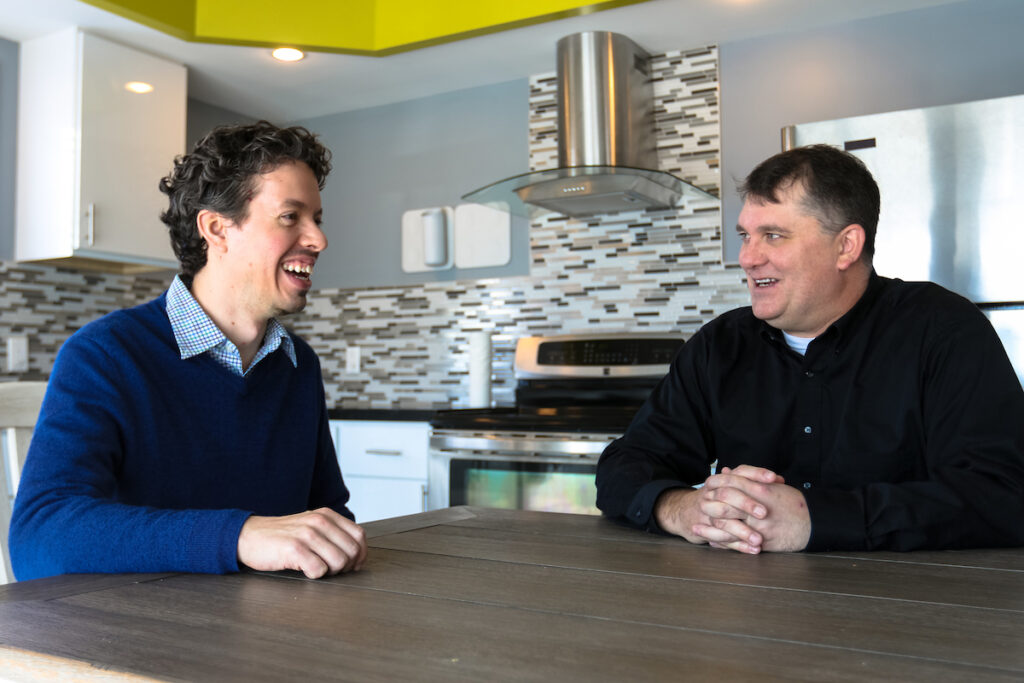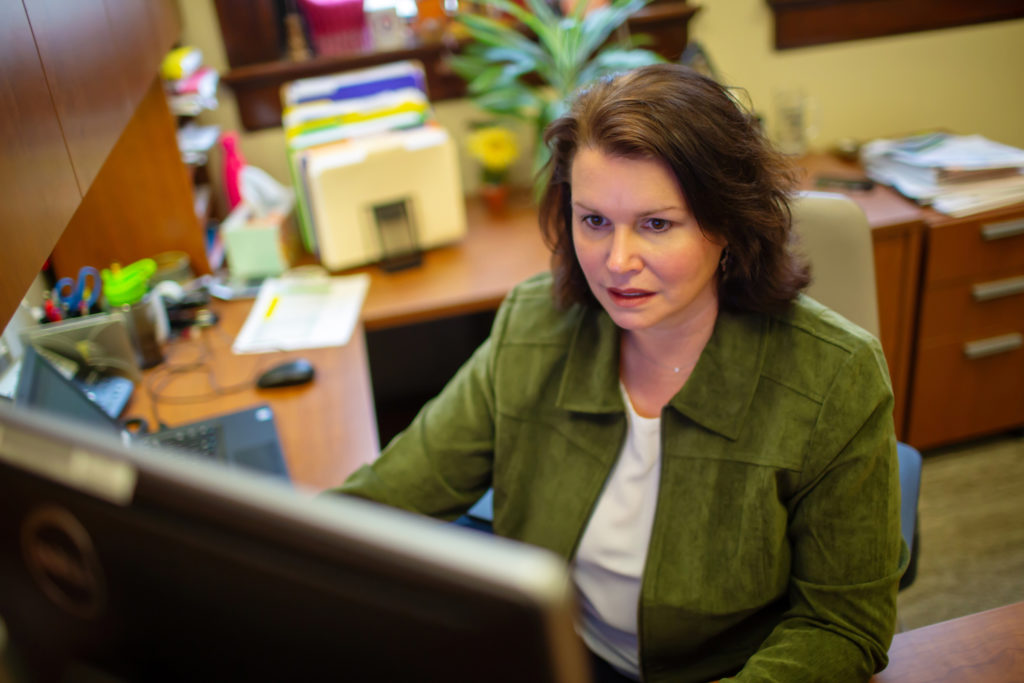A look at the dark side of smart tech
Posted by Sarah Potter

Dr. Fiona Nah, professor of business and information technology, researches human-computer interaction at Missouri S&T. Photo by Terry Barner/Missouri S&T
Smart phones. Smart watches. Smart speakers. Smart appliances.
Smart devices are improving people’s lives every day. Advances in smart technology are helping people stay connected, find information and organize their lives along with numerous other benefits.
With these advances also come a sense of unease and insecurity – concerns about privacy, personal data sharing and ethics.
Dark and bright
Missouri S&T professor of business and information technology, Dr. Fiona Nah, calls this dichotomy the dark and bright sides of technology.
“The dark side could be the frustration of being tracked without our knowledge, which is a privacy and security issue,” says Nah. “The bright side could be the benefits and entertainment – gaming, shopping, and making us more efficient. It goes both ways. Technology is becoming very smart. A smart device is almost like a companion, and there are benefits to that.”
She says we’re likely just beginning to see the ways that machine learning will help us in the future.
“In the machine learning era, we need to provide opportunities for machines and technology to learn before they can get smarter in serving and helping us. An example is the use of a chat bot that is still limited in its functions and capabilities,” says Nah. “Devices such as Google Home are learning about us in order to be more of a true companion, but are we ready to give up our privacy for these benefits?”
Rejecting smart systems

Dr. Daniel Shank and Dr. David Wright are researching rejection of smart systems. Photo by John Rodenberg/Missouri S&T
Dr. Daniel Shank, assistant professor of psychological science, is researching how people respond to smart devices in real-world situations. He and Dr. David Wright, associate professor of English and technical communication, outfitted Missouri S&T’s solar houses with a wealth of smart devices and then surveyed residents’ reactions to having the devices in the homes.
“Largely, they ignored them, turned them off and didn’t put any effort into understanding them,” says Shank. “It reinforces the idea that the devices are very gimmicky – not actually solving real problems that people are talking about.”
This year, Shank and Wright will use seed grant money from Missouri S&T’s new Center for Science, Technology and Society (CSTS) to continue their research on why people might “un-adopt” smart home devices such as Amazon Echo and Google Home.
“We’ve heard some examples where people have actually turned off their smart home hubs because they didn’t realize potential problems,” he says.
Shank has collected stories of home devices sharing private medical data to others in their home, making noises that were unprompted or gathering data when the device was not active.
Seed funding
More S&T researchers will continue exploring the intersection of people and technology thanks to the small CSTS grants. Dr. Kate Drowne, associate dean for academic affairs in the College of Arts, Sciences, and Business, leads the CSTS. She says S&T has a long history of STEM-focused research centers, and the campus needed to add a societal connection.

Dr. Kate Drowne, associate dean for academic affairs in the College of Arts, Sciences, and Business, leads the Center for Science, Technology and Society. Photo by Taisia Gordon/Missouri S&T
“We’re creating opportunities for faculty to work together, including for STEM faculty to work on teams with humanists and social scientists,” says Drowne. “New technologies all have the potential to impact people’s lives, either for harm or for good. Researchers need to examine the significant ethical and moral dimensions related to science and technology in inclusive and thoughtful ways.”
She says the goal of the center is to launch smaller projects focused on collaborations between STEM faculty, humanists, and social scientists, and then to leverage those projects into larger, high-impact research proposals aimed at federal funding agencies.
It’s good to see the humanist voice in the equation of this focus. My advanced art studio students have chosen the topic of “Technology and the Environment”, for their collaborative art work.
They are researching the light and dark sides of how technology has the potential to be directed toward improvement of both human and planetary conditions.